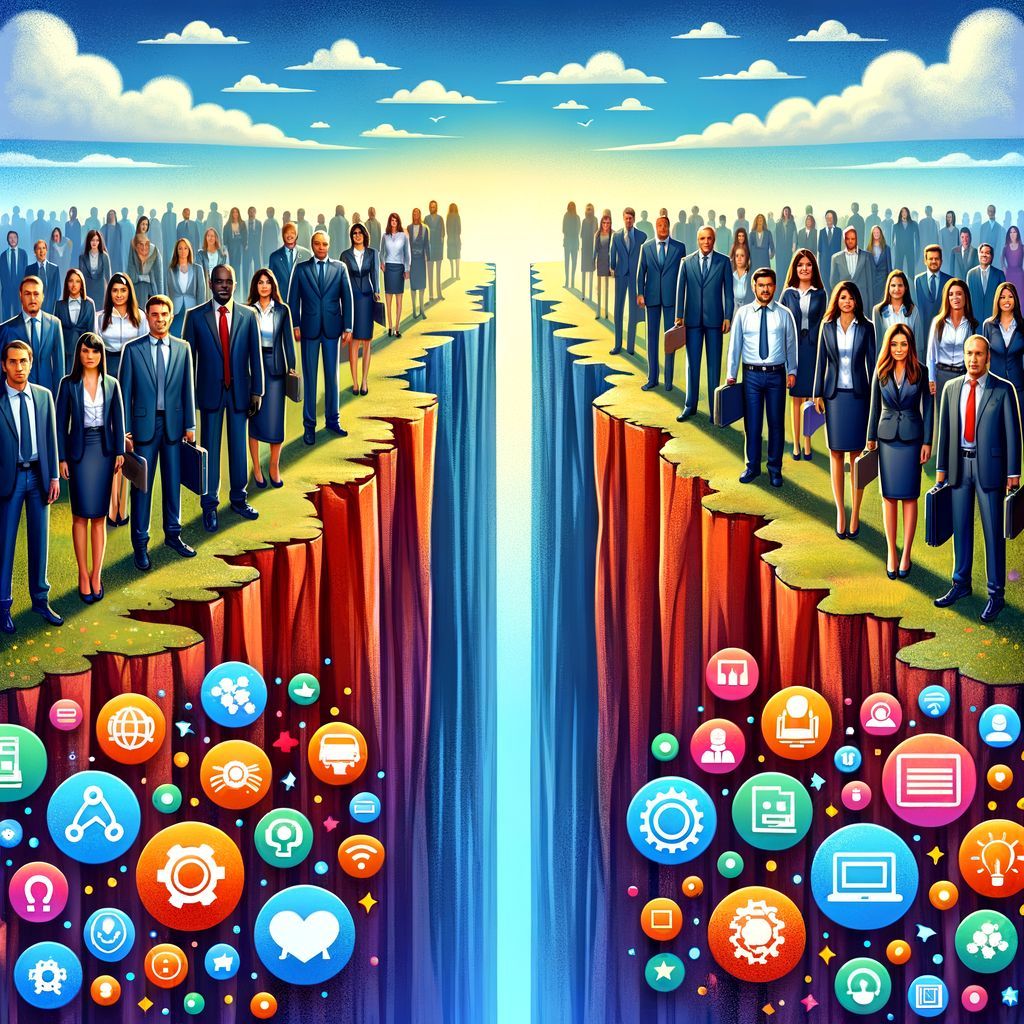

Image by DALL·E Pic: Midjourney
Editors' Note: Many Fast News images are stylised illustrations generated by Dall-E. Photorealism is not intended. View as early and evolving AI art!

AI's rapid rise,
Transforming work and home life,
A new tech era.

Gen AI adoption blowing previous tech uptake out of the water – it’s running twice as fast as internet, personal computing
Generative AI is being adopted more rapidly than previous transformative technologies, like personal computers and the internet.
A new study by the National Bureau of Economic in the US reveals that just two years after the launch of popular tools like ChatGPT, adoption rates reached 39.5%, compared to 20% for the internet and personal computers after similar time frames.
A recent study has unveiled significant findings about the rapid adoption of generative artificial intelligence (AI) in American workplaces. Conducted by researchers Alexander Bick, Adam Blandin, and David J. Deming, the study highlights how quickly this technology is being embraced across various sectors and the implications it may have for productivity and employment.
The research utilised data from the Real-Time Population Survey (RPS), a nationwide survey designed to reflect the current labor market. This survey asked over 5,000 participants aged 18 to 64 about their use of generative AI at work and at home. The study's findings are based on responses collected in August 2024, making it the first nationally representative survey focused on generative AI adoption in the U.S.
Among the other key findings:
1. Widespread Usage: The study found 39.4% of the US population in the specified age group reported using generative AI. Specifically, 28% of employed respondents used it at work, with around 10.6% using it daily.
2. Diverse Applications: Generative AI is being utilised across a wide range of occupations. While it is most common in management and tech roles, one in five "blue collar" workers also reported using this technology regularly. The study highlighted that generative AI is helping workers with various tasks, including writing, data analysis, and administrative support.
3. Demographic Trends: The research noted some disparities in usage based on demographics. Men are more likely than women to use generative AI at work, with younger and more educated individuals also more inclined to adopt the technology. For instance, 46% of workers with STEM degrees reported using generative AI at work.
4. Productivity Potential: The researchers estimated that generative AI assists in 0.5% to 3.5% of all work hours in the U.S. They speculate that if generative AI can increase productivity by just 25%, this could lead to an overall productivity boost of up to 0.875 percentage points.
The study's methodology involved an online survey conducted by Qualtrics, targeting a diverse demographic to ensure a representative sample of the US population. The questions were crafted to mirror existing surveys on technology use, making it easier to compare generative AI's uptake with that of personal computers and the internet.
The researchers collected detailed information on how often and in what contexts participants used generative AI, both at work and in their personal lives. This approach allowed them to draw meaningful conclusions about the technology's impact on various sectors and roles.
As generative AI continues to evolve, its influence on the workplace is becoming increasingly evident, according to the authors who say the rapid adoption and diverse applications of Gen AI suggest that it will play a significant role in shaping the future of work in America. But they also say that as AI capabilities improve, businesses and employees alike may need to adapt to leverage their full potential effectively.










